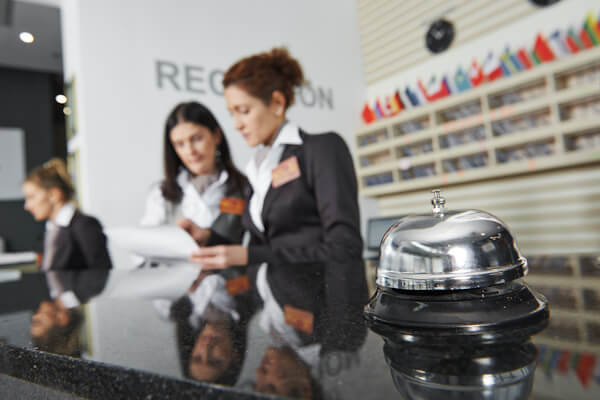4 hospitality industry trends from the Hotel Data Conference 2022
Key hospitality industry trends and how you can apply the data to your hotel
There’s plenty of discussion surrounding how the current market and dynamics are shaping hospitality industry trends. Everything from guest preferences to spending to demand to hotel staff matters.
But what does it all mean and what is the data telling us? We found that answer at STR’s Hotel Data Conference 2022. We picked up 4 insights from the conference that can help you make informed, data-driven decisions for your business.
Here are four key takeaways from the conference.
1. Demand is still strong
One of the most exciting hospitality industry trends is that more people are traveling!
As much as during 2019? No, but we’re getting there. It’s easy to fixate on pre-pandemic levels, which are a useful benchmark for recovery, but it’s equally important to focus on the now.
Demand is increasing, rising from an average of less than 1.5 million daily sold rooms in March 2020 to about an average of 4 million daily sold rooms in June 2022. Additionally, the percentage of hotels with occupancy above 60% is close to 2019 levels. Now is the time to understand what you can do to help drive incremental revenue.
For properties exceeding 2019 levels, demand is trending upward in the budget-friendly leisure segment and driving higher ADR. But there has also been a boost in overall demand for group travel. Corporate and leisure-based groups are having a spotlight moment.
So, which is better for your property? Leisure or group travel? You need to understand the incoming demand in order to execute effective segmentation. Make sure you are engaging in diligent data collection so that you can build your guest profiles and target the right travelers for your property.
2. Spending is increasing
It would also be a good idea to find out how far in advance leisure guests are booking and their average length of stay because those data points influence your upsells. Now that employment has recovered, spending is up! Travelers’ spending is exceeding inventories, and most of those purchases are for food and accommodations. This means those same travelers are more likely to spend more once they’re on your property.
Getting ahead of the uptick in spending could simply mean baking in upsell offers into your email campaigns or initiating deals upon arrival. You should be targeting big spenders, but you also need to be striving for accurate segmentation. Even during the pandemic, personalized communication was crucial, and this applies to your upsells as well.
Would these travelers respond more to early check-in or check-out? How does this change if they are a direct booker or a repeat booker? And if you didn’t already know, many guests prefer text communications. So, a text messaging solution would support property upsells while also meeting guest expectations.
3. The staffing shortage remains
The staffing crisis continues as one of the lasting hospitality industry trends following the pandemic. While U.S. employment may be back to what it was in 2020 at more than 150 million, hoteliers around the globe are struggling to fill open positions. Labor force participation is still hovering around 62%, according to the U.S. Bureau of Labor Statistics, which decreases the efficiency of hotel operations and negatively influences the guest experience.
The adoption of hotel technology is a key part of the solution to remedying these pain points. This allows hoteliers to focus on reacting to demand growth.
Hotel staff are working to keep up with guest inquiries and requests, which can take time away from other responsibilities. And since your property may be operating with less staff, a quick and effective text messaging solution can help ease these staffing challenges while also satisfying guest concerns, leading to a more enjoyable stay. You’ll be preventing a negative guest experience with a text!
Automation from tech will boost your staff productivity, but it can also save you time in other ways. Properly executing your segmentation and personalization plans is rooted in automation. Remember the upsell opportunities we discussed earlier? Those upsells can be systematically supported through automated email campaigns, ensuring that those offers are delivered to the right guest, with the right message, at the right time.
You can also initiate a proactive new guest acquisition strategy using automation. For example, if your sales team identifies a guest who inquired but didn’t book, leveraging a tool that allows you to trigger an automated response to guests like these seizes the opportunity to follow up and convert that guest from a lead into a booker. Later, targeting that same guest for upsells is made easier through automation.
4. Gas and airfare rises aren’t make or break
Gas, airfare, and inflation. These three factors have been at the forefront of news headlines in recent months. Surprisingly, guests don’t care as much as you might think.
We aren’t seeing a reduction in hotel demand based on guests that are likely driving more than flying to their destinations, even as gas prices rose to nearly $5 per gallon in June. And for those travelers who are flying, hotel demand remains largely unaffected by airfare. As far as inflation and ADR are concerned, a dramatic change is unlikely. ADR levels are projected to gradually reach a plateau.
Now’s the time to take action on these hospitality trends
Now, it’s time to plan your reaction to these hospitality industry trends. For most industries, wages are supportive of travel, allowing yet more opportunities to upsell guests who can spend more. Think about what offers you can apply to guests from specific industries based on their assumed wages. Organizing your data to segment and target these groups will only help increase your revenue.
Discover more tips for using segmentation to target guests and optimize campaign performance in our webinar: “5 advanced marketing strategies for hotels to drive direct channel revenue.”
Related Posts

Insights that drive results
Subscribe now to get the latest content
This site is protected by reCAPTCHA and the Google Privacy Policy and Terms of Service apply. *Required fields.



